The knife-shaped sliver of sunlight coming through Laing’s motel room window is there on the floor moving and slowly elongating (though he and I can’t see this happening) like a weapon made from light. I remembered something that had happened after I first arrived in Wisconsin, a week prior to meeting Laing. I had gone to a small tavern across the river from my motel. The waitress — thinking back on it now — resembled an older version of the waitress Laing described from the Destroyer film, wearing the yellow server’s outfit and looking so ravaged and thin as if in her mind there was a continuously running blast furnace. Of course it wasn’t the actual waitress from the film because I hadn’t seen Destroyer , and yet because I hadn’t seen it I couldn’t be sure it wasn’t her, as if somehow she, or the phantom possibility of her, had leaked into my life just prior to Laing’s recollection of a movie that featured her as a bit character. No matter, there I found myself at the tavern where a version of the Destroyer waitress brought me my drinks in a ritual that was absurdly formal, as if I couldn’t fetch them from the bar myself, or as if I needed a new white napkin with each glass of beer and in fact it was this last detail — about the napkins — that led to our brief and cryptic conversation, one that I won’t repeat here except to say that it touched on the local children who had disappeared and who had been the subject of the news reports and flyers stapled to telephone poles and even one small billboard along the road that pictured a heavily pixillated face of a young girl with the words FIND ME next to it. The waitress said that she understood like only a mother can ( but what about a father? I wondered) the void of losing a child like that and the terror of not being able to shut off the part of your brain that speculates on the details and that my journey to and from Laing’s motel was going to be much more complicated and treacherous than it appeared.
“ Black Star begins with a color-saturated Polaroid that fills the screen,” Laing says at last, and with a sort of stupid authority that I would come to understand as a form of concealment. “It’s Alejandro Jodorowsky’s most coherent film, as if he had decided to make a movie whose style went against his every instinct as a director, or as if he had split into two men, one who directed the incoherent elephants-battling-elephants sequence in Tusk (1980) and another who directed Black Star which, despite its madness, is grounded in reality. Which is to say that it’s absurd, but absurd in a way that’s familiar. The Polaroid is of someone crouched next to what appears to be an archeological dig, pointing into a shallow pit and smiling, as if he had just unearthed an artifact. He looks to be of college age, or maybe a little older. He’s in a desert, and the light is yellow. His dark hair is windblown. The Polaroid is accompanied by this voiceover: ‘Diego was into the distribution of goods, and the acquisition of labor. In this way he acquired slaves, used them to produce distributable goods, and acquired more slaves.’
“It’s voiced by a woman — Diego’s girlfriend or wife? — who has a slight Southern accent. You picture her telling this story sitting on the back stoop of some remote cabin, smoking a cigarette, as an owl watches her from the woods. The way she says slaves, it sounds like slayves , the ay coming from the very back of her throat. Then the screen goes black for a few seconds before the Polaroid appears again, this time blown up so that what Diego’s pointing toward is at the center of the screen. What he’s pointing at doesn’t matter though because it’s his finger that draws our attention, bent at a weird angle, an impossible and painful angle, as if broken. And tattooed on the back of his hand is what appears to be a small black star.
“At least that’s how I remember it,” Laing says, as if there’s anyone to question how he remembered it, or as if to distract me from the sliver of sun shaped as a knife which has now taken on an orange hue, a persistent orangeness that suggests a secret passageway beneath the motel to a furnace so enormous that it could only be understood in terms of Miltonic Hell. “I saw the film only once, on late-night cable, in a distant country where I didn’t speak the language. I had been sent by the university in Pennsylvania to Warsaw, of all places, to learn about the latest methods in humidity stabilization as it applied to microfiche and other silver-gelatin and vesicular film-based storage devices. This was in the spring of 1987, or the fall of 1988. It was the first English I had heard in days, and so I watched it straight through. The story was convoluted and hard to follow but just when it verged on the ridiculous some small dark moment kept the film frightening enough to keep watching.
“It turns out that the kid in the Polaroid — Diego — has been sent to Mexico to live with an aunt after his parents were killed in an auto accident. The aunt, who attempts to seduce him, is a former model who goes around her apartment in a pink silk robe and with rollers in her hair and a cigarette whose ashes she taps into the clay flower pots scattered around the apartment. Diego runs away, working various jobs at the tourist hotels up and down the coast of Zihuatenejo, Mexico, and where he eventually befriends a rich childless couple from Germany whom he manages to con, after an elaborate weeks-long performance that begins innocently enough but that ends with an act of violence that leaves stains on the walls that, in another setting and another context, could be viewed as abstract art. The movie suggests that Diego discovers that the couple are Nazis, not neo-Nazis or Nazi sympathizers or far-right extremists but actual Nazis, which is impossible because it’s the mid-1980s, and yet when Diego discovers their Nazi uniforms in the hotel room closet on a rack hidden behind the main closet rack it’s clear the uniforms aren’t antique or vintage but new, new but worn, so it’s not like they’re collectors. They actually wear these things. And this shot — as Diego parts with both hands the first set of hanging clothes to reveal, behind them in the closet, the Nazi uniforms with their bright red armbands and the black swastikas (which seem to be in motion, as if marching through history) — this shot, especially, looks as if it was filmed not just on film stock from the 1940s, but in the 1940s. Just how he escapes their hotel room with over one hundred thousand dollars isn’t exactly clear but I do remember that in the next scene he’s in disguise, or else time is supposed to have passed and he’s grown older. He’s gone deeper south yet into the remote mountains north of Tarija, Bolivia.
“Years pass in the movie. Maybe a decade. The transitions don’t seem linear. It’s as if the movie was edited by people who have a mixed-up or perverse sense of time. Next thing you know, Diego is the owner of three indigenous Bolivians — two men and a woman — who look like their costumes (such as they are) were designed by someone with a poor memory of those anthropological photos of tribesmen and women from 1970s issues of National Geographic . We assume Diego has purchased them with the money filched from the Nazi couple. The movie uses English subtitles when the slaves talk in what sounds like a made-up, mixed-together language of Spanish, Quechua, and Tacana, but the subtitles are riddled with spelling errors, and Diego’s name is spelled at least three different ways. There is a quickly edited, heavy-handed sequence (really the only Jodorowsky-like part of the entire film) that I think is supposed to depict the slaves’ increasing love and devotion to Diego, although maybe it’s intended as a metaphor for hegemony itself: how the oppressed often internalize the very values of the oppressors thus becoming compliant in their own disastrous fates. In one shot, a naked slave smashes his iron ankle chains with a stolen hammer and instead of fleeing or using the hammer on the unarmed Diego, he drops it and embraces Diego with tears in his eyes. ‘My master, mi padre,’ he says, sobbing.
Читать дальше
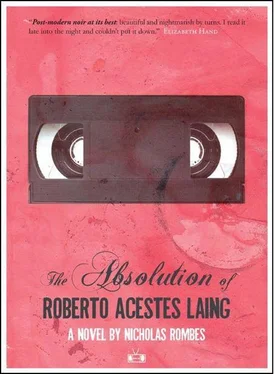

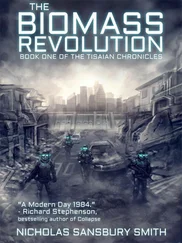

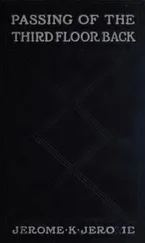


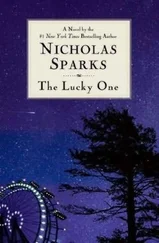


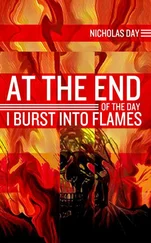

![Nicholas Timmins - The Five Giants [New Edition] - A Biography of the Welfare State](/books/701739/nicholas-timmins-the-five-giants-new-edition-a-thumb.webp)